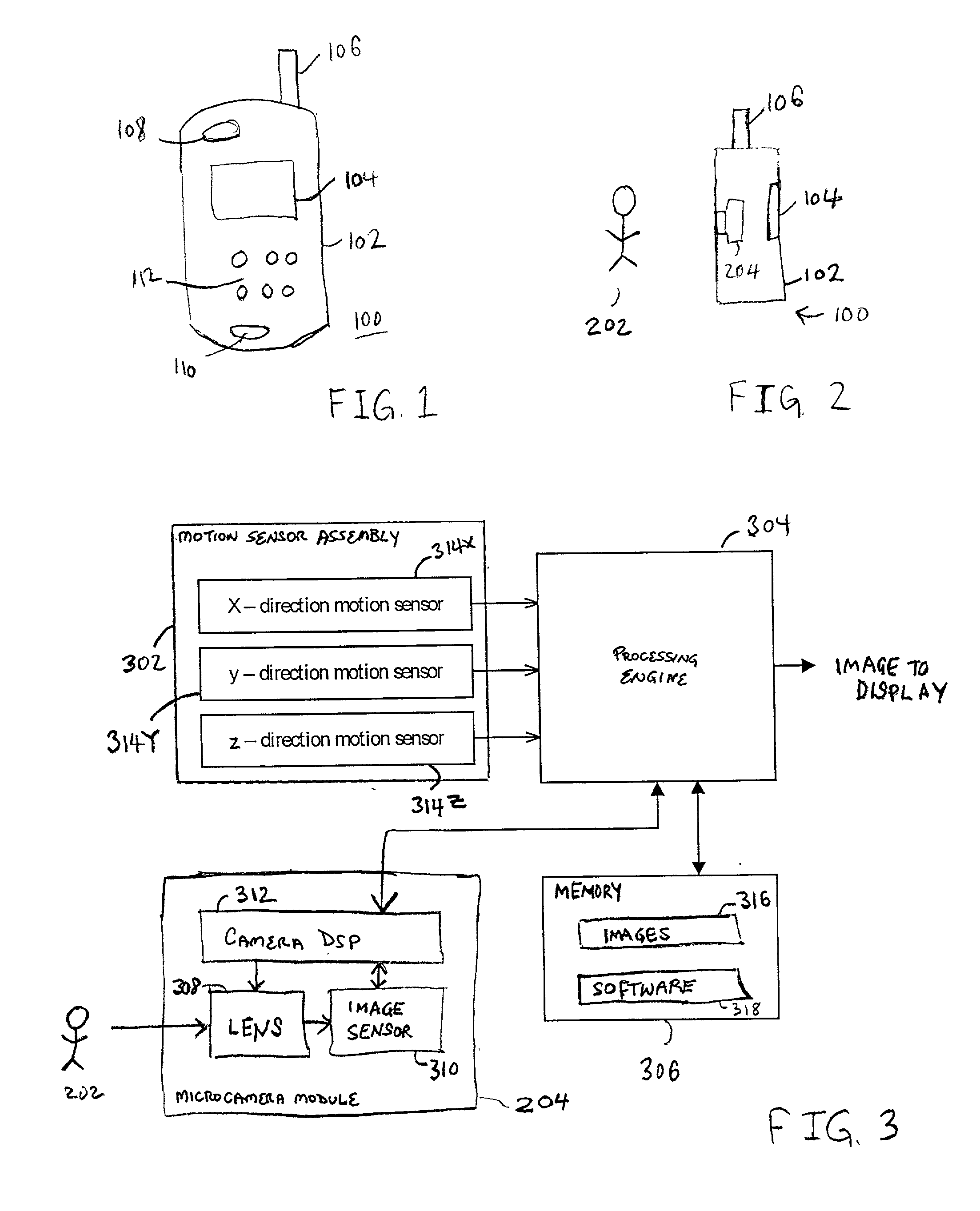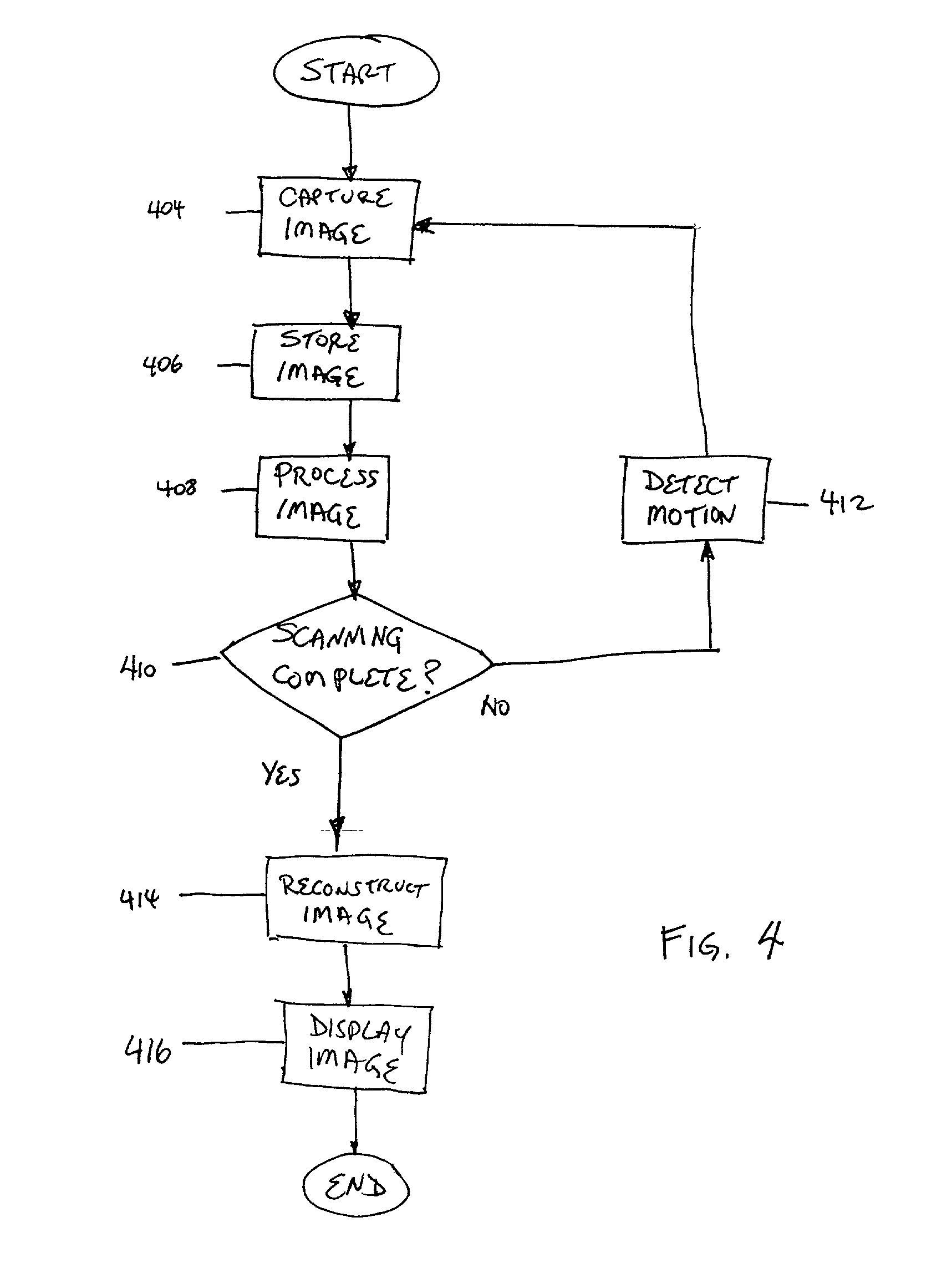Method and handheld device for obtaining an image of an object by combining a plurality of images
a handheld device and image technology, applied in the field of image processing, can solve the problems of difficult to ascertain where or if two successive images line up or overlap, and the size of the image of the object is not uniform, and the plurality of images is substantially impossible without some kind of user interaction
- Summary
- Abstract
- Description
- Claims
- Application Information
AI Technical Summary
Problems solved by technology
Method used
Image
Examples
first embodiment
[0023] FIG. 4 shows the basic process steps of the present invention. Initially, after the device has been activated, an image of an object is obtained by focusing the lens and capturing an image with the image sensor, step 404. The scanned image of the object is stored in memory for further processing and / or display, step 406. The stored image is then processed in accordance with instructions received from the processing engine. If this is the first obtained image, there may be no processing. If the image is a second or subsequent image, the image is processed, step 408, in accordance with information gathered by the device including detected motion and / or brightness of the obtained image. For example, the detected motion of the handheld device is used to correct the position, orientation and size of the image. Additionally, the brightness of the image may be corrected by comparison of the obtained image to a predefined or stored desired brightness standard. It is then determined w...
second embodiment
[0028] Referring now to the example of the present invention shown in FIG. 6, the object 202 comprises a three-dimensional object, in this case a person. For this embodiment, it is assumed that the object is not subject to the optimal lighting conditions so that individual images taken by a conventional camera would not be sufficiently bright, and would be blurred. These undesirable effects are caused because under these less than optimal lighting conditions, to obtain an image the shutter speed of a conventional camera would have to be reduced to allow sufficient light to enter the camera to generate an image; however, under these conditions, any movement of the camera module, caused, for example, by the shaking or movement of a user's hand, will result in a blurred image. Increasing the shutter speed will reduce the effect of movement of the camera, but will result in images that are too dark. Enhancing the digital contrast and / or brightness may decrease the darkness of the image,...
PUM
 Login to View More
Login to View More Abstract
Description
Claims
Application Information
 Login to View More
Login to View More - R&D
- Intellectual Property
- Life Sciences
- Materials
- Tech Scout
- Unparalleled Data Quality
- Higher Quality Content
- 60% Fewer Hallucinations
Browse by: Latest US Patents, China's latest patents, Technical Efficacy Thesaurus, Application Domain, Technology Topic, Popular Technical Reports.
© 2025 PatSnap. All rights reserved.Legal|Privacy policy|Modern Slavery Act Transparency Statement|Sitemap|About US| Contact US: help@patsnap.com



